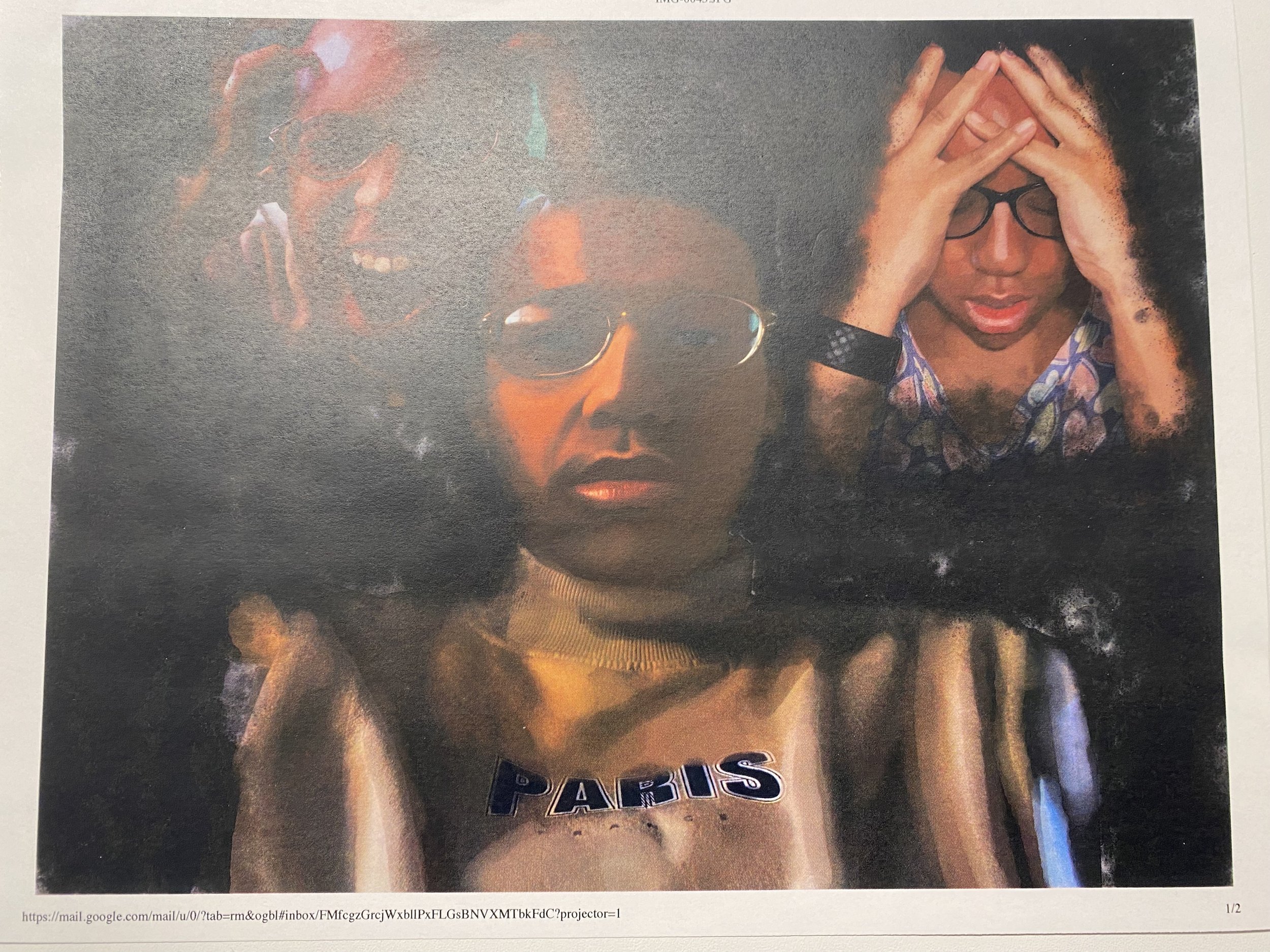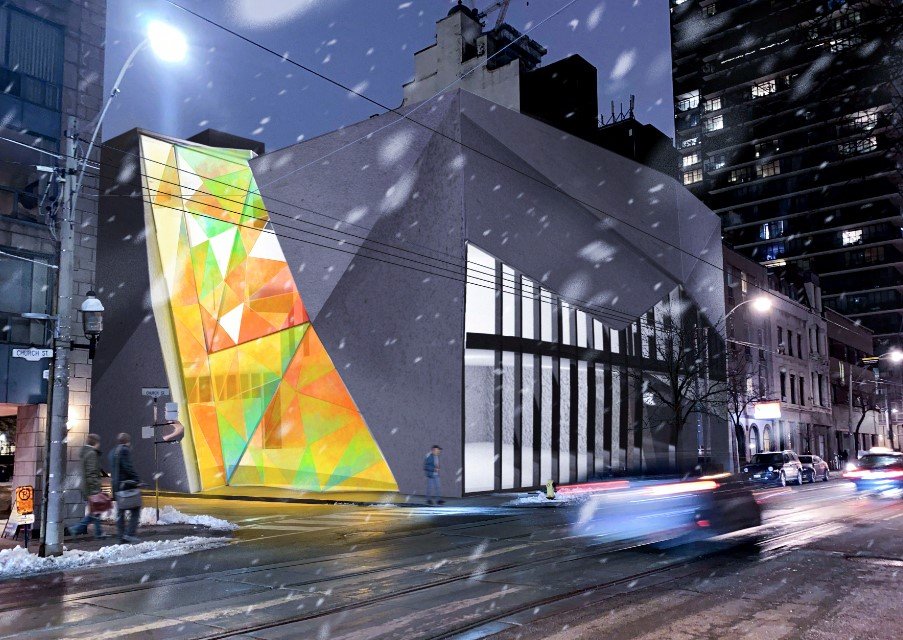
''We celebrate your unique lived experiences and creative voices. Thank you for trusting us to support your journeys.''
- WRNS Studio Foundation
Fall 2023 Recipients
Dashawna Brown
-
Getting to know Dashawna Brown
Dashawna Brown is a 2023 recipient of the WRNS Studio Foundation Scholarship. They graduated from Wadleigh Secondary School of Visual and Performing Arts in New York, NY and completed an exciting internship this past summer. We spoke with Dashawna recently about their journey and their plans for the future.
What is your educational plan? What challenges have you faced along the way?
My educational plans are to go to an accredited BArch program to become licensed in architecture. I want to work in a firm and eventually make my way to creating my own firm. I want to build homes and buildings that contribute to the community. I want to make a difference in the world. However, some personal challenge I've had was being in foster care most of my life. It made it hard for me to catch up with all the other people in my classes since I had trouble at home. I somehow made a way for myself to get to the point where I am living in New York City planning on taking up the career path I want them to take up in the future. Being in foster care showed me that being in a house is one thing but making it home is different. I've been to many places in my life, and I experienced a lot of things when I was really young. But, one thing that I have learned, is that everyone deserves a home and people deserve to have a place to be themselves.
Thinking of your cultural background and lived experience, how do you envision creating a more beautiful, sustainable, equitable built environment as an architect or designer?
I envision creating a more healthy environment by creating living areas where the building is more eco-friendly and where there are fewer toxic tools that go into creating a safer environment. I also think that reusing old run-down areas would be a great use of space to show that an old run-down area can be changed for the better by using old-looking materials and turning them into something cool. I think if I was an architect I would invest my time in creating more things within the homes that help the families work better and more functionally. I suggest a few more smart house gadgets be added within a home to help the family who lives there live an easier life.
What is a creative interest or talent that brings you joy?
Something that brings me joy is reading about ways the world could have been different if people just learned how to respect and love each other despite their differences. I noticed that the world is changing but not for the better because people do want to learn to love and respect each other. I also love going outside, listening to an audiobook, and checking out old and new neighborhoods in the city.
It's marvelous to see different ways people design their yards and their neighborhoods in ways that make them unique and different. For example, in the East village of Manhattan, the scenery and the building are so cool. I went down there and it was interesting to see. How people have built different things that make it stand out, like there are hidden cafes and little hangout spots all over the city that are hard to find. So, I just walk around for hours and check out outstanding things all the time in the city. The architecture in the city always sparks inspiration when I'm thinking about life as an architect to be able to build, plan, and create monuments and homes that can stay for decades.
I love seeing the people in the city as well. The people in the city show me a new story every day that intrigues me because I could go outside every day and learn something different. Sometimes I experience contrastive things around the city that make me ponder about stuff I could improve on when I become an architect.
*Dashawna transitioned out of the program to pursue a different art major and plans to return to Architecture for graduate school. WRNS Studio Foundation wishes them all the best on their journey!
Adneth Marie Kaze
-
Getting to know Adneth Marie Kaze
Adneth Marie Kaze is a 2023 recipient of the WRNS Studio Foundation Scholarship, which she will use to pursue a Master of Architecture at Columbia University. She completed her Bachelor of Architectural Science co-op at Ryerson University in Toronto, Ontario. We spoke with Adneth recently about her journey and her plans for the future.
What is your educational plan? What challenges have you faced along the way?
I plan to pursue a Master of Architecture at Columbia University in the Fall of 2023. Growing up in my area, attending an Ivy League institution was unheard of. By the time I started high school, I knew I wanted to pursue a career in architecture. When attending the local high school in my low-income neighborhood, I realized that some university-required courses, such as chemistry and physics, were not part of the curriculum. To ensure I could pursue my passion for architecture, I enrolled in a school in a different neighborhood. Although I had access to more courses, facilities, and extracurricular activities, I was one of only two black students in a class of 360 and felt completely out of place. When I began my architectural studies, I was underrepresented and faced racial discrimination and negative stereotypes, which gave me imposter syndrome despite performing well. Despite this, I knew that quality education is empowering and can be used to alleviate social disparities.
Now, my main concern is the cost of pursuing my master’s degree. Many black students find themselves in positions where financial barriers prevent them from attending higher education, perpetuating a cycle of inequality where access to top-tier education and opportunities is limited to certain demographics. I appreciate organizations such as WRNS Studio Foundation that aim to increase accessibility to architecture education and the profession.
Thinking of your cultural background and lived experience, how do you envision to creating a more beautiful, sustainable, equitable built environment as a future architect or designer?
Throughout history, all racialized social processes have been reflected in the built environment. Architecture has been used to segregate, isolate, and gentrify communities. Our landscapes are spatial manifestations of structural inequalities that are noticeable in housing, healthcare, and education. I myself was born in a refugee camp in Kigoma, Tanzania, following the genocide in Rwanda and Burundi during the 90s. Later, I had the opportunity to immigrate to Quebec City, Canada, and then lived in subsidized housing for 15 years. As a result, I experienced the direct impacts of the built environment in reinforcing a sense of exclusion, unsafety, and insecurity. I believe that architects should take into account the socioeconomic ramifications of projects, embrace alternative ways of thinking, consider others' experiences, and use our agency to benefit diverse communities. As a future architect, I am committed to creating spaces that are not only beautiful and functional but also resilient and inclusive for all. This includes designing durable and energy-efficient buildings, as well as creating inclusive spaces that promote social interaction and community engagement. By prioritizing equity, cultural sensitivity, and sustainability in my work, I hope to contribute to a resilient and equitable future.
Describe a design or research interest you plan to pursue. How will it help advance the profession and your community?
In my pursuit of a Master of Architecture, I plan to explore the intersection of architecture and socio-politics with a focus on the current economic, housing, and environmental crises. Given that these crises will have a disproportionate impact on marginalized communities, I believe it is critical to examine the role architecture can play in restoring quality of life, fostering community and providing protection.
During my studies, I want to further explore the concept of Temporary Architecture as a design intervention to natural disasters and political unrest. I am interested in researching how new innovations can be integrated into the creation of low-carbon, flexible, and easy-to-construct temporary dwellings and infrastructures that improve health and well-being and engage the community in the construction process. I'm also interested in investigating Adaptive Reuse and Preservation as a design intervention. This strategy promotes sustainable development, cultural diversity, and social inclusion, and can be utilized to celebrate the cultural heritage of marginalized communities. By recognizing the complex, multi-dimensional nature of historic buildings and landscapes, preservation can help create new functions for existing resources in contemporary societies and promote a more inclusive and resilient built environment.
Ultimately, investigating design interventions such as temporary architecture and adaptive reuse can contribute to the advancement of the architecture profession and the black community by exploring the ways in which architecture can help mitigate the effects of the current economic, housing, and environmental crises on marginalized communities. My goal is to improve the well-being and quality of life of marginalized communities while celebrating their cultural heritage in a way that does not promote displacement and gentrification. I aim to use my agency to support vulnerable communities and promote equity through public interest architecture.
My dedication to this field earned me the Montgomery Sisam Architects Inc. Award in 2022 for addressing the role of architecture in creating and promoting equitable and diverse communities. Two studio projects have been instrumental in shaping my research interests. The Nia Centre project with Professor Cheryl Atkinson allowed me to design for a non-profit organization dedicated to the celebration of black youth. This unique project addressed the lack of safe spaces for African-Canadian communities and encouraged me to conduct extensive research to genuinely understand the complex socio-historical context of the site and community. The second project was the Kay Blair Hospice with Professor Yew-Thong Leong. This project considers the urgent need for accessible and equitable care for dying individuals in Brampton, Ontario. It pushed me to investigate the determinants of health and the ways in which the discrepancy in the quality of the built environment and urban planning directly affects one’s life expectancy. It strengthened my desire to design for health, well-being, and security in vulnerable communities.
How will you leverage your career as an architect or designer to pay it forward to future generations of architects and designers?
I aspire to become a licensed architect and use my voice to advocate for diversity, equity, and inclusion in spaces where black people, especially black women, have been historically underrepresented. My goal is to increase the visibility and representation of black women in this field and serve as a role model for younger girls who look like me.
Through architecture associations started by black women, I had access to mentorship, portfolio reviews and internship positions that would have otherwise not be accessible to me. I am committed to joining similar associations or starting my own to be able to provide guidance, share my experiences, and offer support and advice to young black designers.
In addition, I plan to become an architecture professor later in life and provide direct support during the arguably more challenging part of becoming an architect: education. Throughout my Bachelor of Architecture Science program, I never had a black professor or lecturer. Representation matters, and the lack thereof made my dream of becoming an architect seem out of reach. I am committed to becoming the change I want to see and increasing representation in architecture education while combating negative racial stereotypes in the process.
More about Adneth Marie Kaze…
I am involved in mentoring architectural science students in their first, second, and third year of university. I joined the mentorship program of my school to provide tailored guidance and help younger students reach their full potential. I also took the initiative to extend my mentorship and guidance to black and brown girls in my program.
During my co-op positions at Diamond Schmitt Architects (4 months) and Cumulus Architects Inc. (1 year), I gained valuable experience in architecture. At Diamond Schmitt Architects, I worked on a preservation and new construction research building for McGill University. I created and managed construction documents, collaborated with a signage consultant, and advanced reflected ceiling plans in lab areas, corridors, and administrative spaces. At Cumulus Architects Inc., I conducted extensive research on project requirements, contributed to construction documents, physical and digital models, and schematic drawings, and collaborated with an acoustic consultant to produce 77 ceiling and interior partition assemblies. I also worked closely with a design team in a fast-paced environment to produce drawings and offer design solutions for a P3 project.
In terms of extracurricular activities, I worked on a design-build project, and I was the Editorial Coordinator for a publication where I reviewed and consolidated reports, conducted supplementary research, and collaborated with the editorial team. Additionally, I love to stay active and thrive in team sports such as cheerleading, volleyball, rugby, and basketball. I also enjoy dancing, afrobeat music, woodworking, painting, photography, and am learning how to code in my free time.
Selected Works
2022-2023 AP Art Class Series by Dashawna Brown
2022-2023 AP Art Class Series by Dashawna Brown
2022-2023 AP Art Class Series by Dashawna Brown
-
Some of the artwork in the examples express how I've felt about being in a new environment and struggling with finding who I am as a person. These art pieces are part of a huge series I am creating for my AP art class in school. The art theme is who I am in this broken world, this title I chose to show that I may live in a crazy world but I still found who I am and what I want to become throughout the time I am on the earth. I like to make art that shows something more than just pictures and colors, I like to show meaning in the art I create using all different kinds of mediums.
Sarah Hall Glass Museum by Adneth Marie Kaze
-
Sarah Hall is a Canadian stained glass artist. She is mainly known for her large scale art glass installations and solar projects.
This project represents a proposal for a small gallery along Church Street, Toronto, located adjacent to Court square. The client for this project is Sarah Hall and the Gallery is focused on her work, stained glass and glass technology.
-
Kay Blair Hospice is a not-for-profit organization that seeks to provide end-of-life care in a safe, compassionate and inclusive environment.
I was tasked with designing a 12-bed hospice to accommodate the diverse population of Brampton. My main focus was to improve the quality of life and dignity of residents until the very end. The approach does not consider death as an endpoint but rather the transition between life and the afterlife. Through its design, the Hospice embraces this journey and facilitates the process for residents and their loved ones.
-
Nia Performing Arts Centre is a Toronto-based not-for-profit organization that supports, showcases, and promotes an appreciation of arts from across the African Diaspora.
The vision for the Nia Centre is to create a safe space for young black creatives to express their creativity freely. There is a need for a gathering space free from the mainstream stereotypes and marginalization that permeate every other societal space. My intent for this project was to reflect and celebrate the diversity within the black experience and highlight the opportunities for exploration and discovery. A central courtyard connects all levels of the building. The program is organized in a way that maximizes interconnecting floor space and open spaces.







